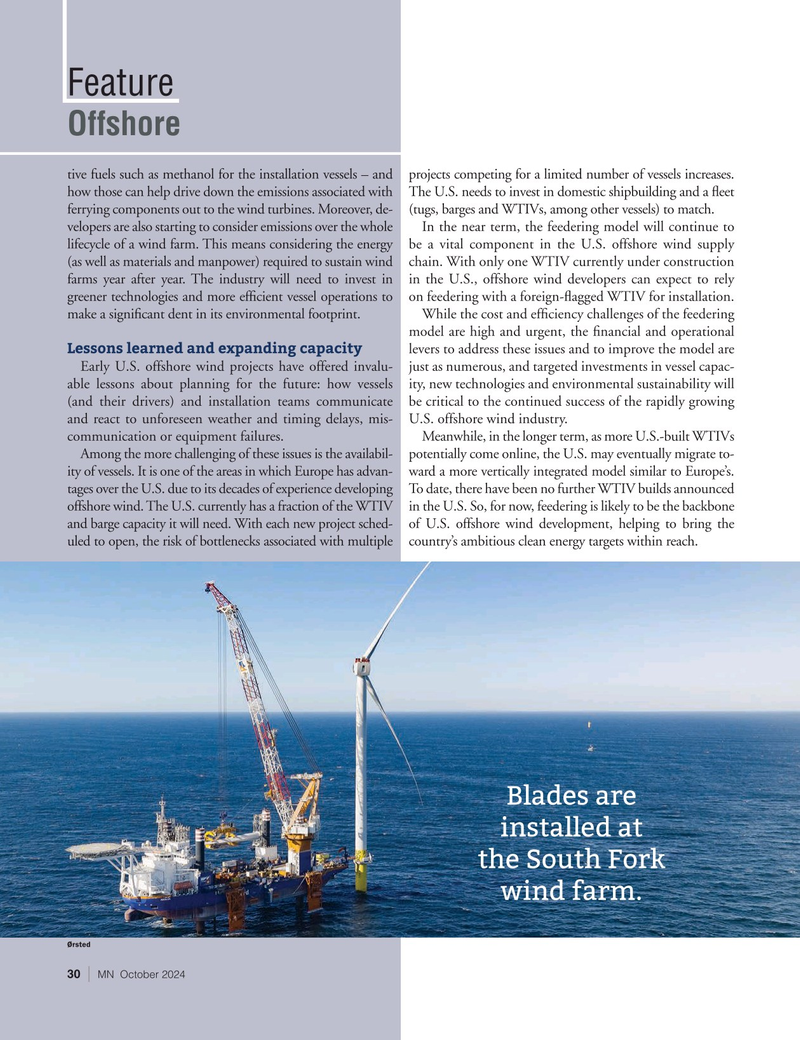
Page 30: of Marine News Magazine (October 2024)
Read this page in Pdf, Flash or Html5 edition of October 2024 Marine News Magazine
Feature
Offshore tive fuels such as methanol for the installation vessels – and projects competing for a limited number of vessels increases. how those can help drive down the emissions associated with The U.S. needs to invest in domestic shipbuilding and a ? eet ferrying components out to the wind turbines. Moreover, de- (tugs, barges and WTIVs, among other vessels) to match.
velopers are also starting to consider emissions over the whole In the near term, the feedering model will continue to lifecycle of a wind farm. This means considering the energy be a vital component in the U.S. offshore wind supply (as well as materials and manpower) required to sustain wind chain. With only one WTIV currently under construction farms year after year. The industry will need to invest in in the U.S., offshore wind developers can expect to rely greener technologies and more ef? cient vessel operations to on feedering with a foreign-? agged WTIV for installation. make a signi? cant dent in its environmental footprint. While the cost and ef? ciency challenges of the feedering model are high and urgent, the ? nancial and operational
Lessons learned and expanding capacity levers to address these issues and to improve the model are
Early U.S. offshore wind projects have offered invalu- just as numerous, and targeted investments in vessel capac- able lessons about planning for the future: how vessels ity, new technologies and environmental sustainability will (and their drivers) and installation teams communicate be critical to the continued success of the rapidly growing and react to unforeseen weather and timing delays, mis- U.S. offshore wind industry. communication or equipment failures. Meanwhile, in the longer term, as more U.S.-built WTIVs
Among the more challenging of these issues is the availabil- potentially come online, the U.S. may eventually migrate to- ity of vessels. It is one of the areas in which Europe has advan- ward a more vertically integrated model similar to Europe’s. tages over the U.S. due to its decades of experience developing To date, there have been no further WTIV builds announced offshore wind. The U.S. currently has a fraction of the WTIV in the U.S. So, for now, feedering is likely to be the backbone and barge capacity it will need. With each new project sched- of U.S. offshore wind development, helping to bring the uled to open, the risk of bottlenecks associated with multiple country’s ambitious clean energy targets within reach.
Blades are installed at the South Fork wind farm.
Ørsted 30 | MN October 2024

 29
29

 31
31
